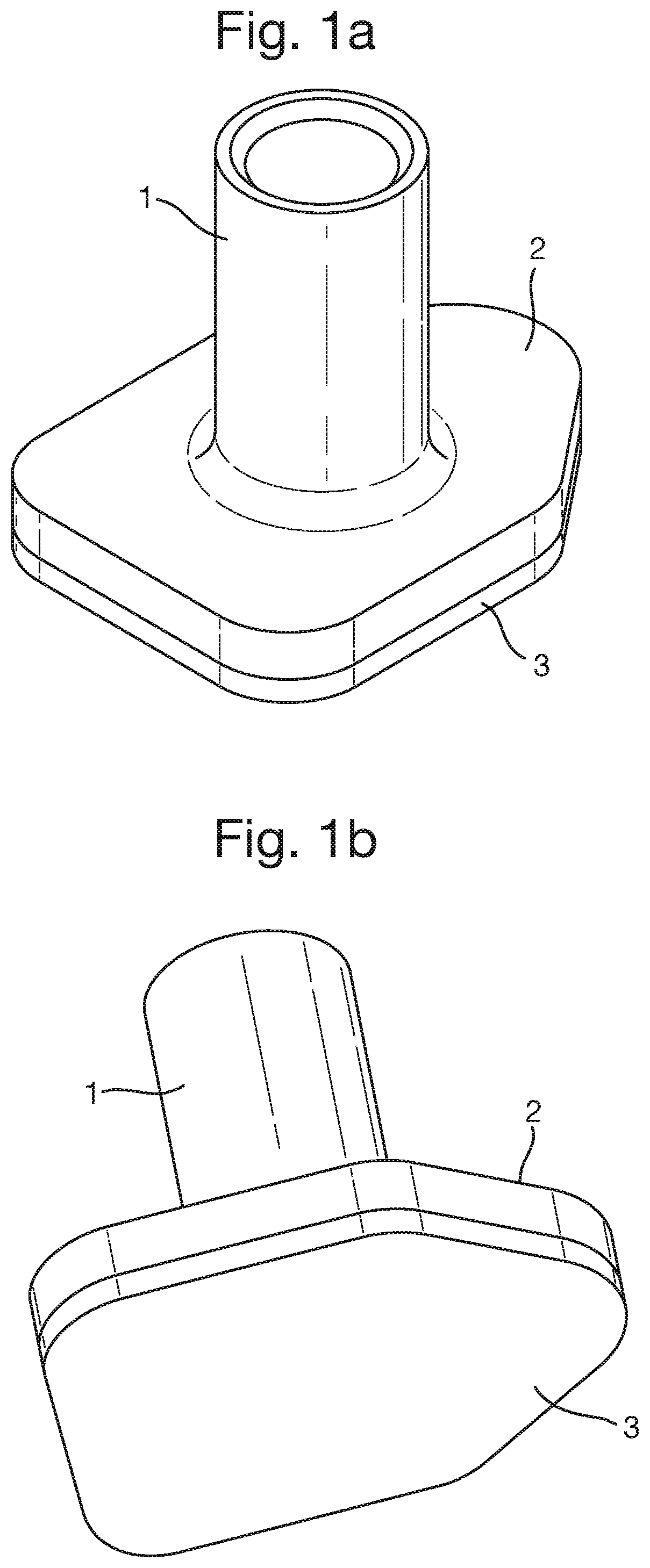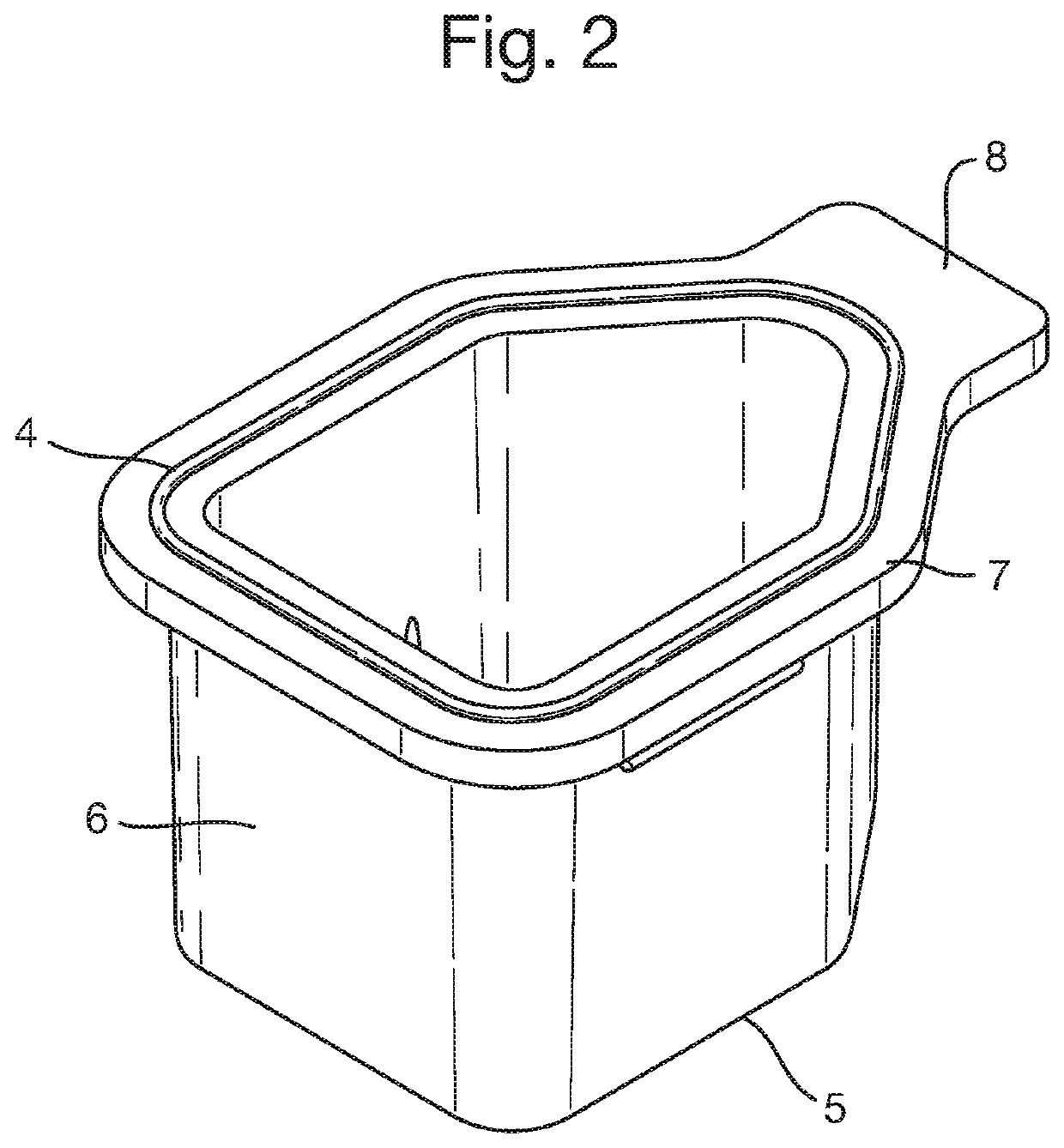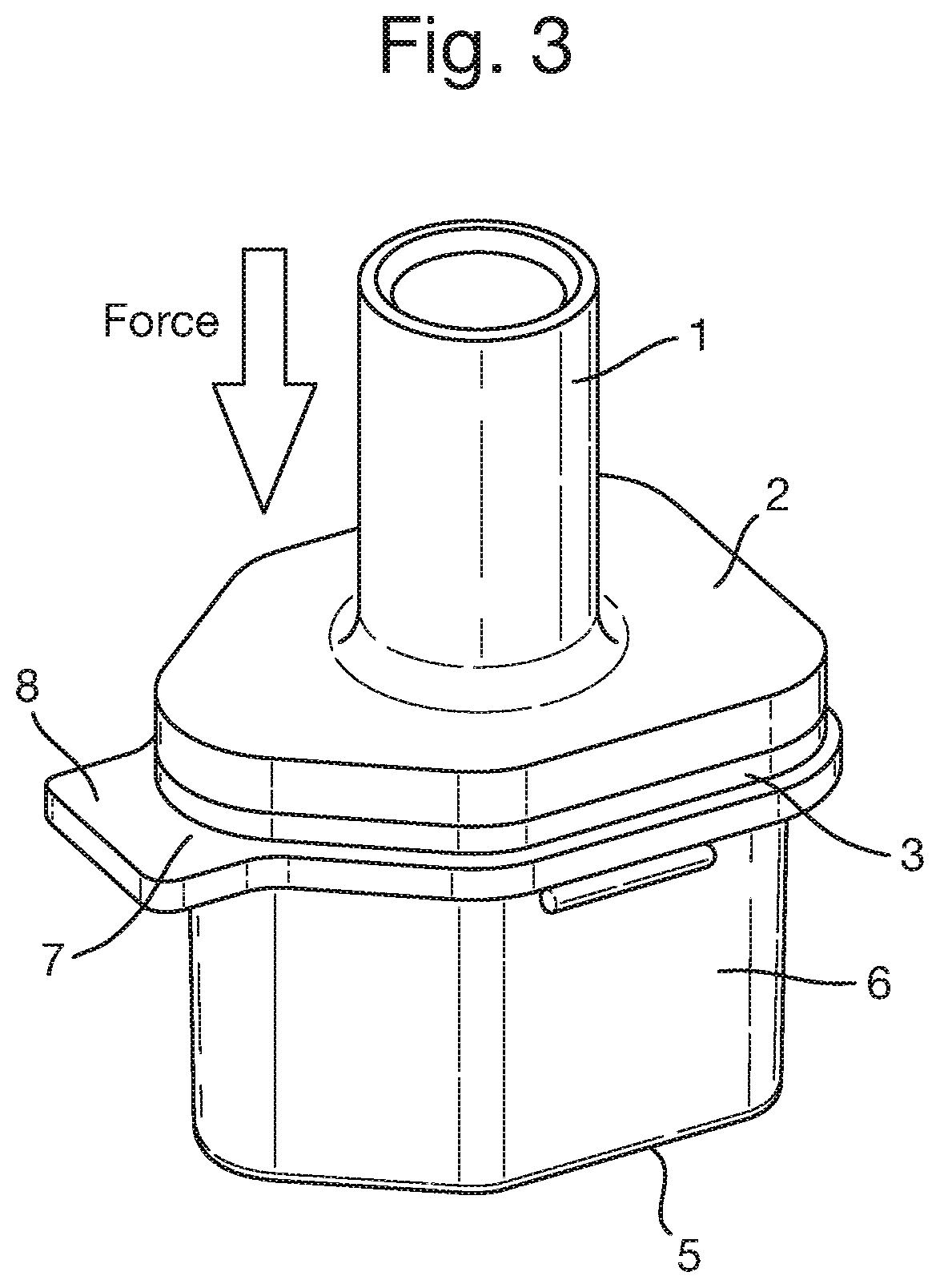Biochip storage wells
a biochip and storage well technology, applied in the field of immunoassays, can solve the problems of fluid loss through vapour through the opening of the well cavity and subsequent contamination of the environment, lab equipment or a biochip analyser, incur an additional cost, etc., and achieve the effect of facilitating the sliding motion of the cap
- Summary
- Abstract
- Description
- Claims
- Application Information
AI Technical Summary
Benefits of technology
Problems solved by technology
Method used
Image
Examples
Embodiment Construction
[0057]The invention will now be described in relation to the following non-limiting examples. The amount of evaporation occurring in an assay assembly comprising a cap according to the first embodiment of the present invention and biochip storage well as illustrated in FIG. 2 was determined, in order to investigate the vapour-proof seal between the resilient sealant layer and knife-edge interface. A force of 50 N was applied to the cap to act as the clamping force.
[0058]The test method used to determine the % of evaporation was as follows;[0059]Heat wells to 60° C. for 1 hour[0060]Place 550 μl of deionised water into the wells[0061]Weigh the wells before and after test[0062]Well caps should be clamped at 50 N
[0063]Table 1 shows the results for the above method when testing a nitrile sealant layer of 1 mm. The cap according to the present invention, comprising a 1 mm nitrile sealant layer was placed onto the storage well of FIG. 2 containing 550 μl of deionised water. A force of 50 N...
PUM
| Property | Measurement | Unit |
|---|---|---|
| thickness | aaaaa | aaaaa |
| thickness | aaaaa | aaaaa |
| thickness | aaaaa | aaaaa |
Abstract
Description
Claims
Application Information
 Login to View More
Login to View More - R&D
- Intellectual Property
- Life Sciences
- Materials
- Tech Scout
- Unparalleled Data Quality
- Higher Quality Content
- 60% Fewer Hallucinations
Browse by: Latest US Patents, China's latest patents, Technical Efficacy Thesaurus, Application Domain, Technology Topic, Popular Technical Reports.
© 2025 PatSnap. All rights reserved.Legal|Privacy policy|Modern Slavery Act Transparency Statement|Sitemap|About US| Contact US: help@patsnap.com



